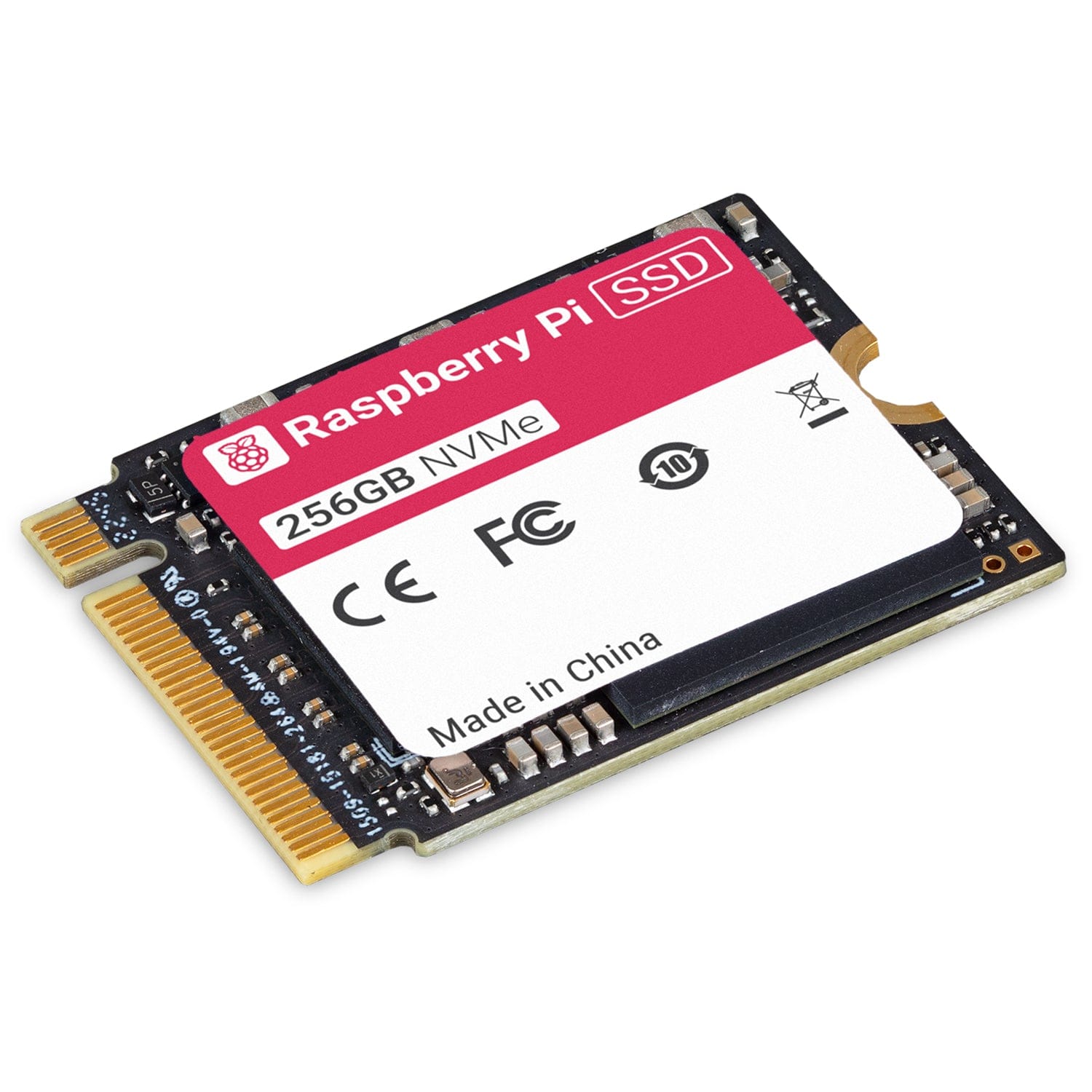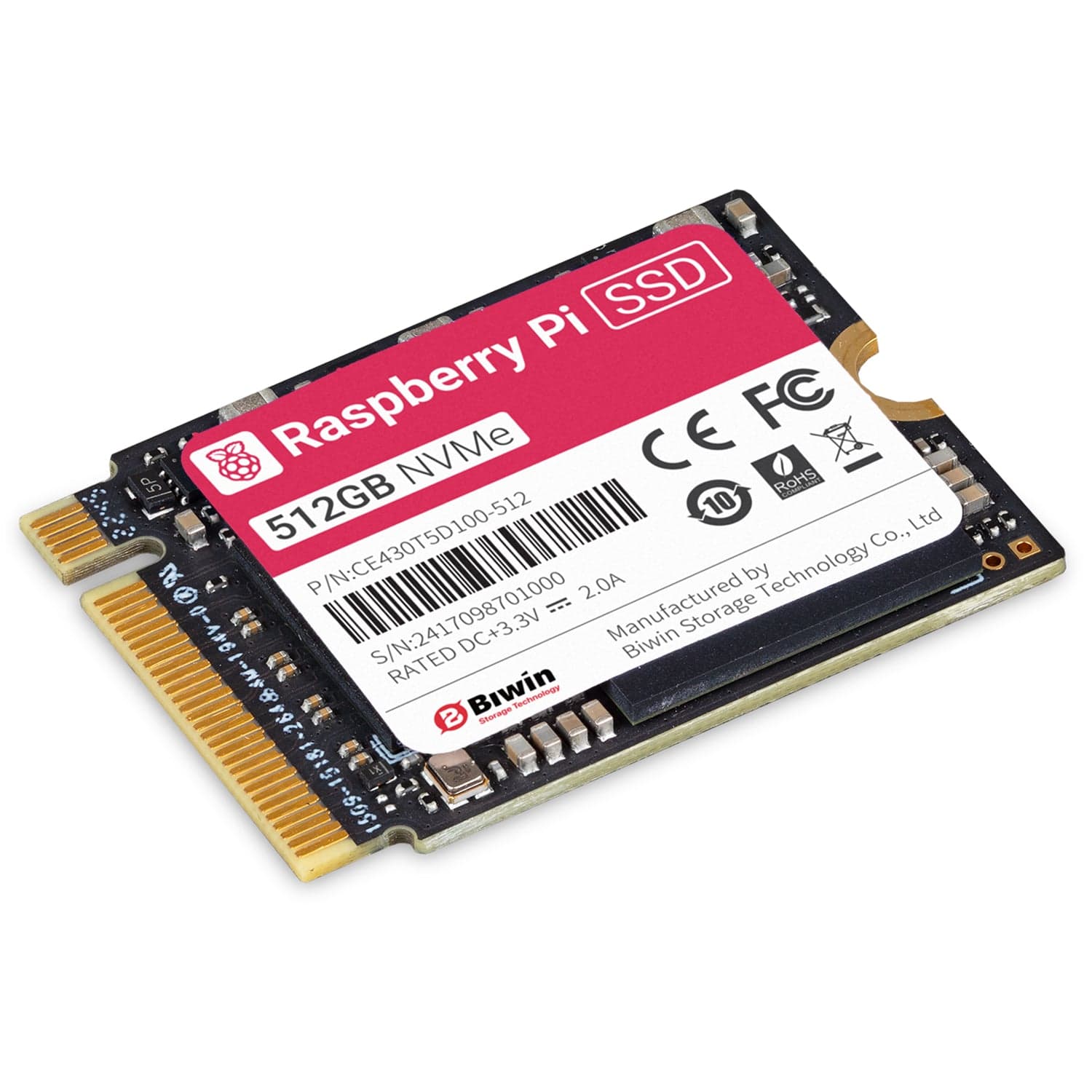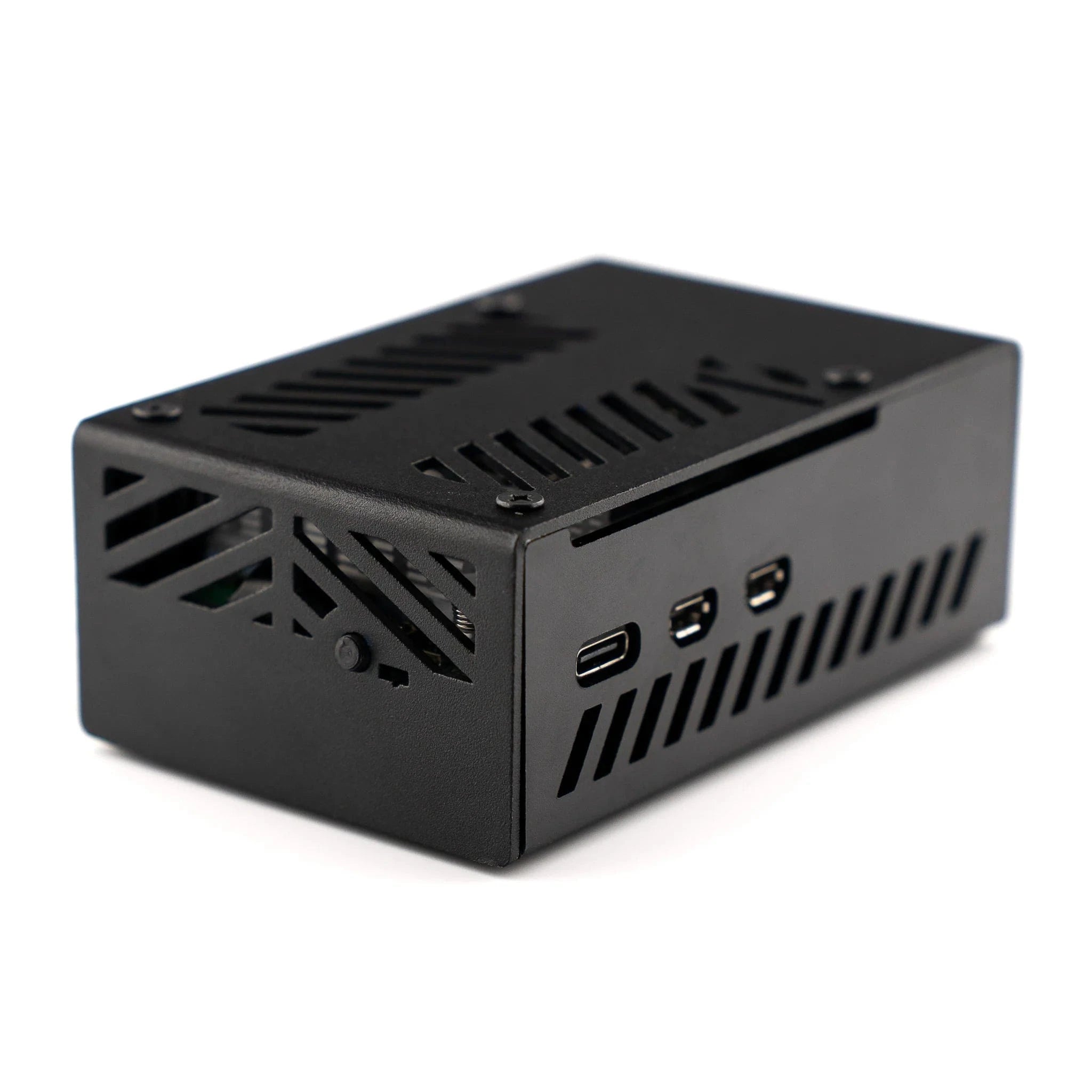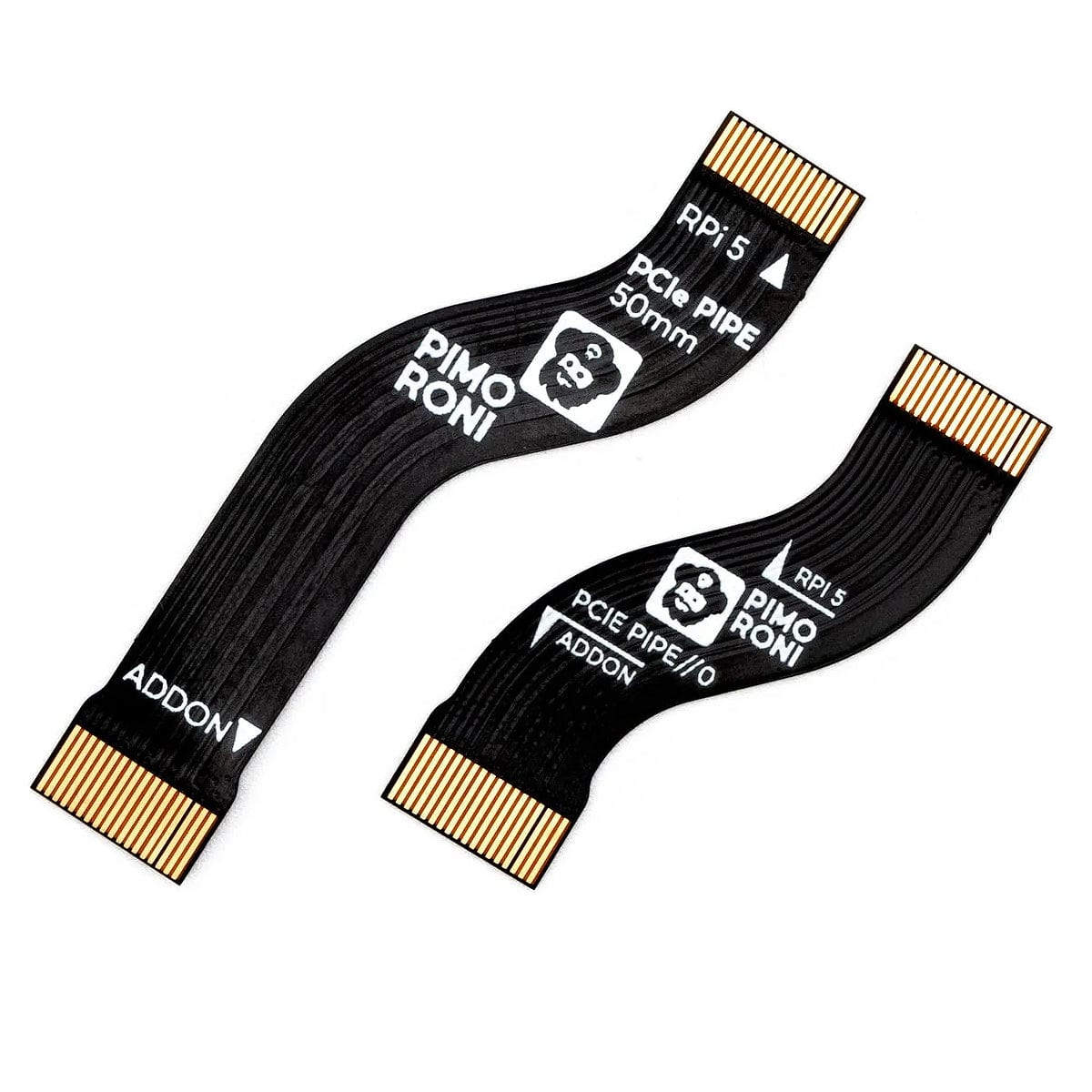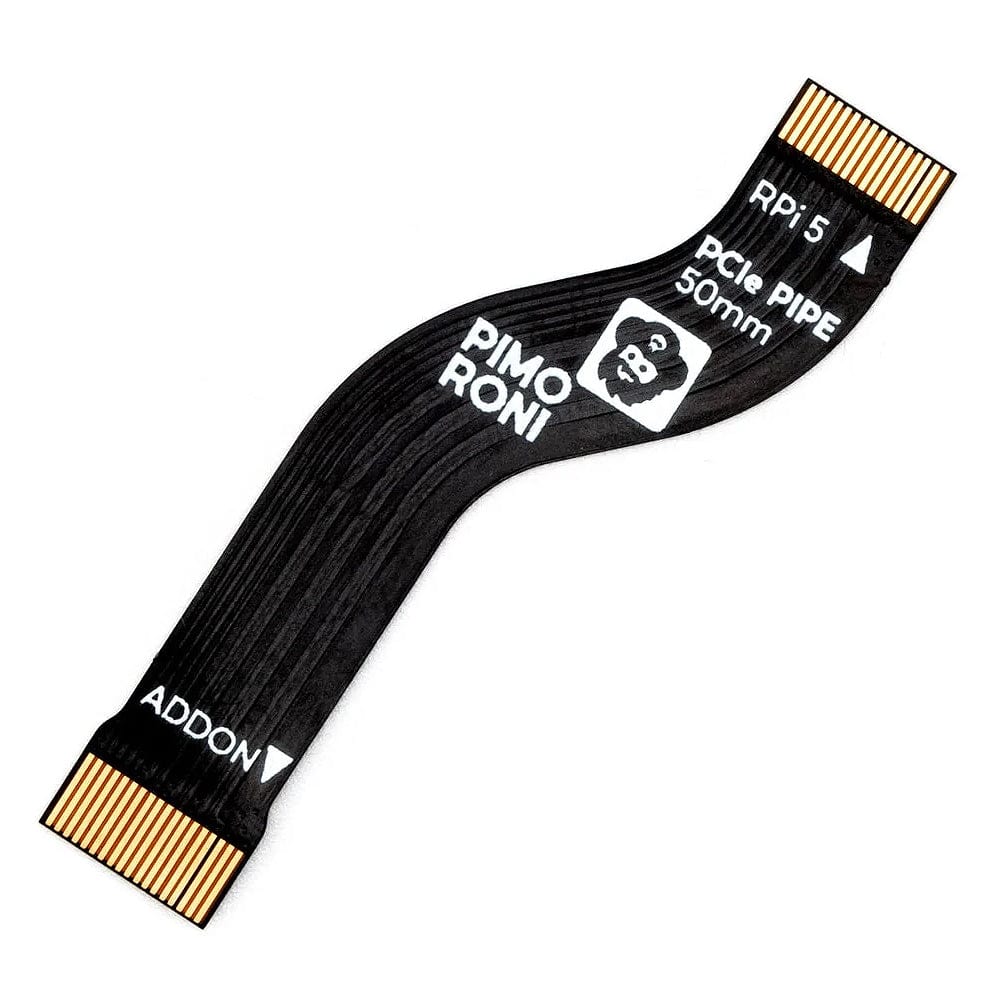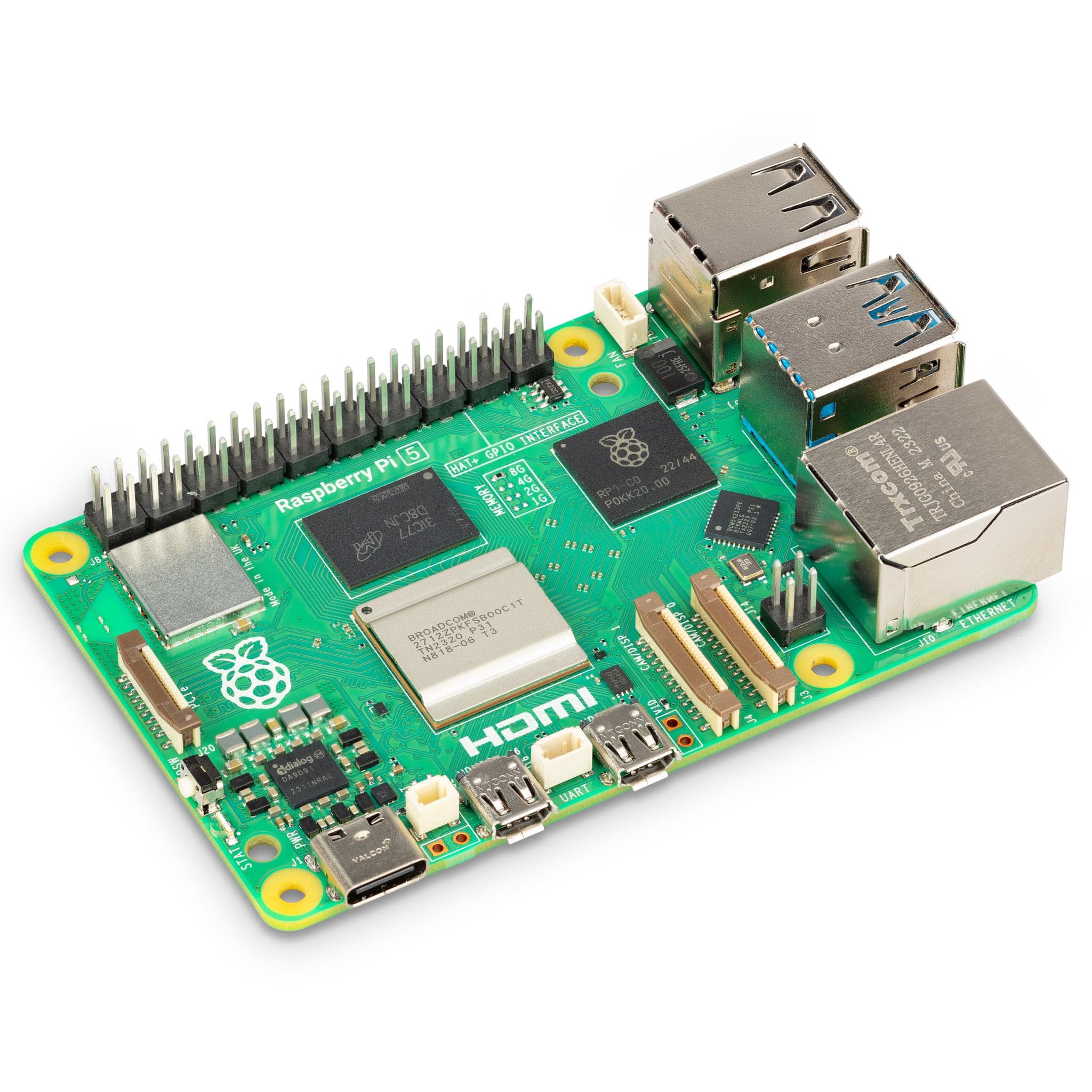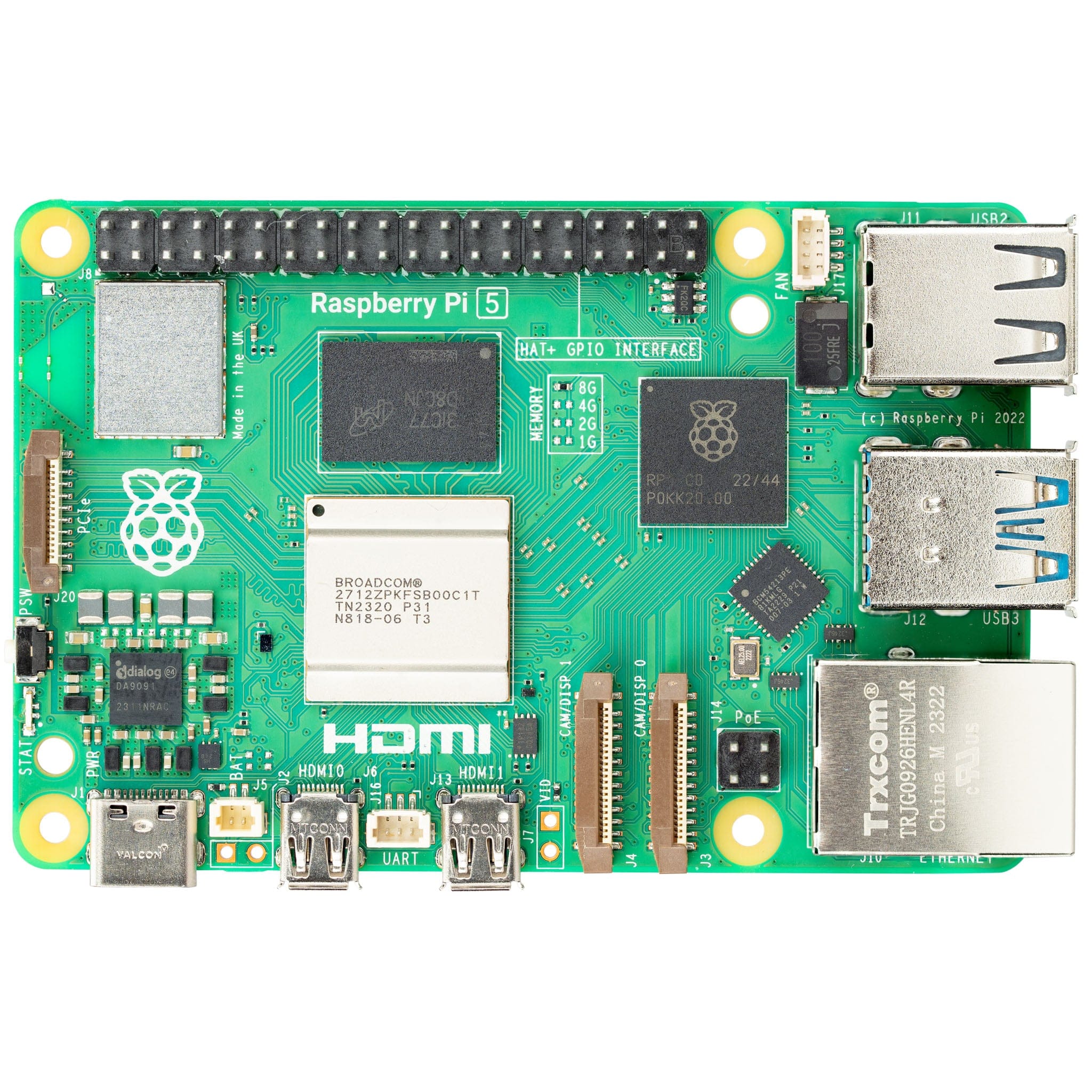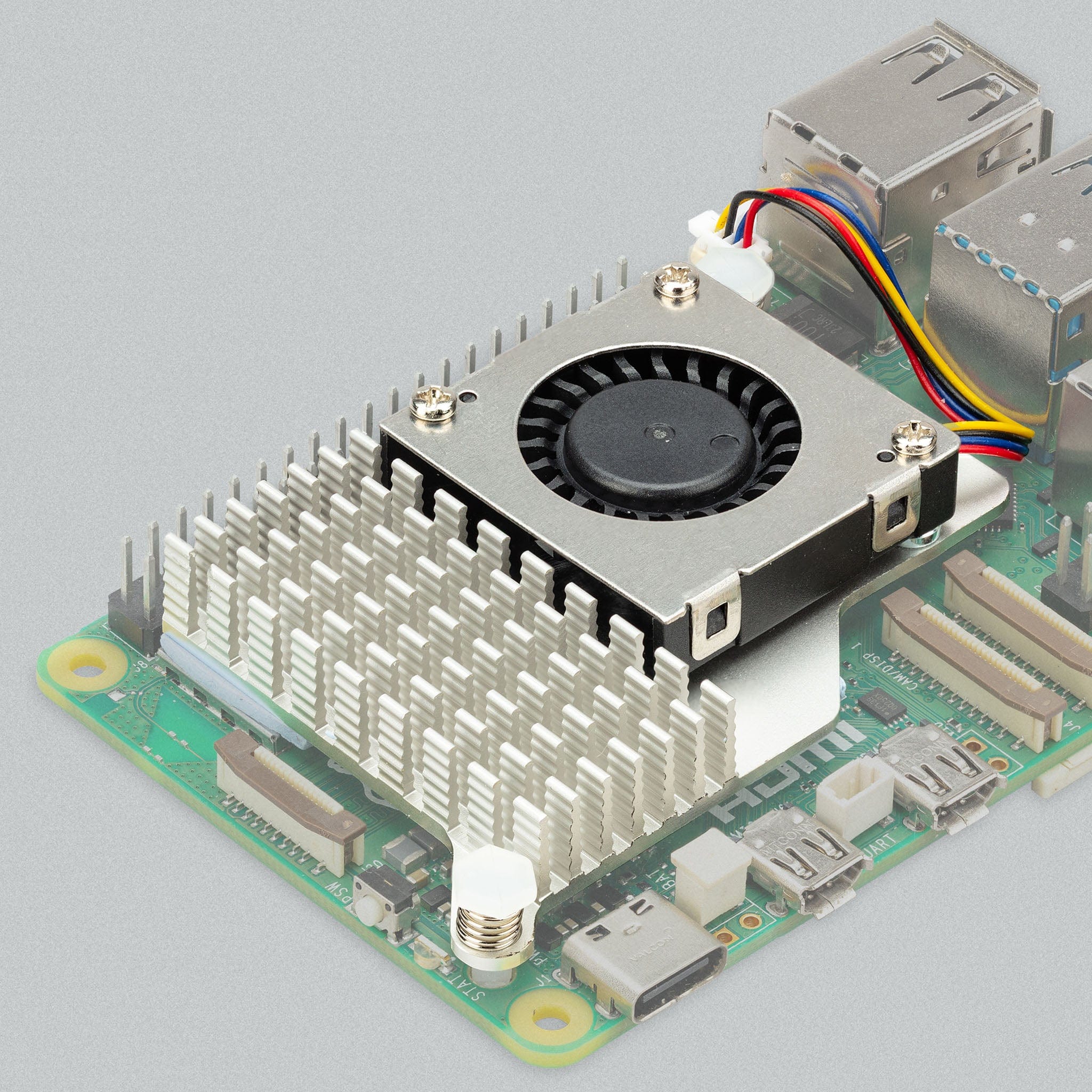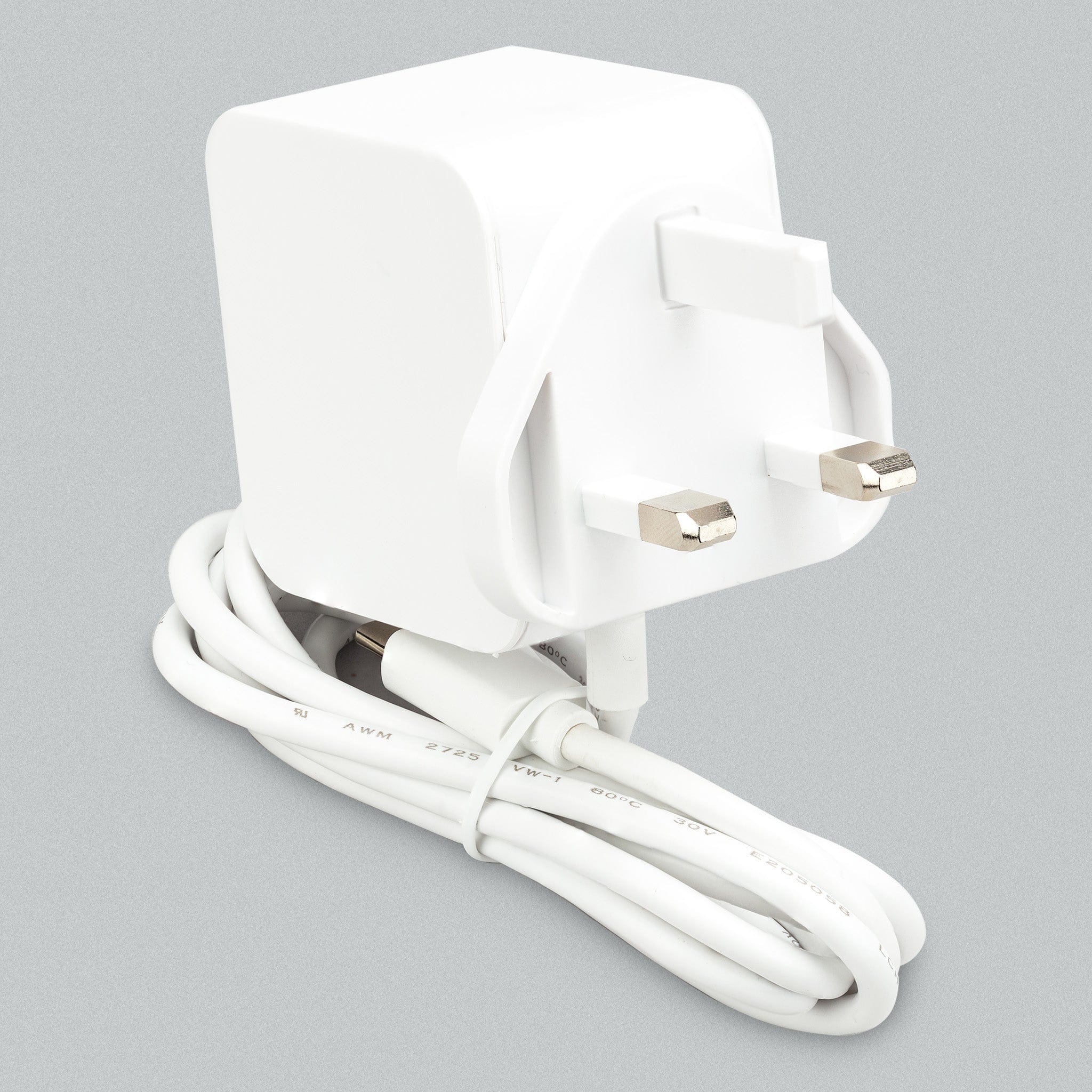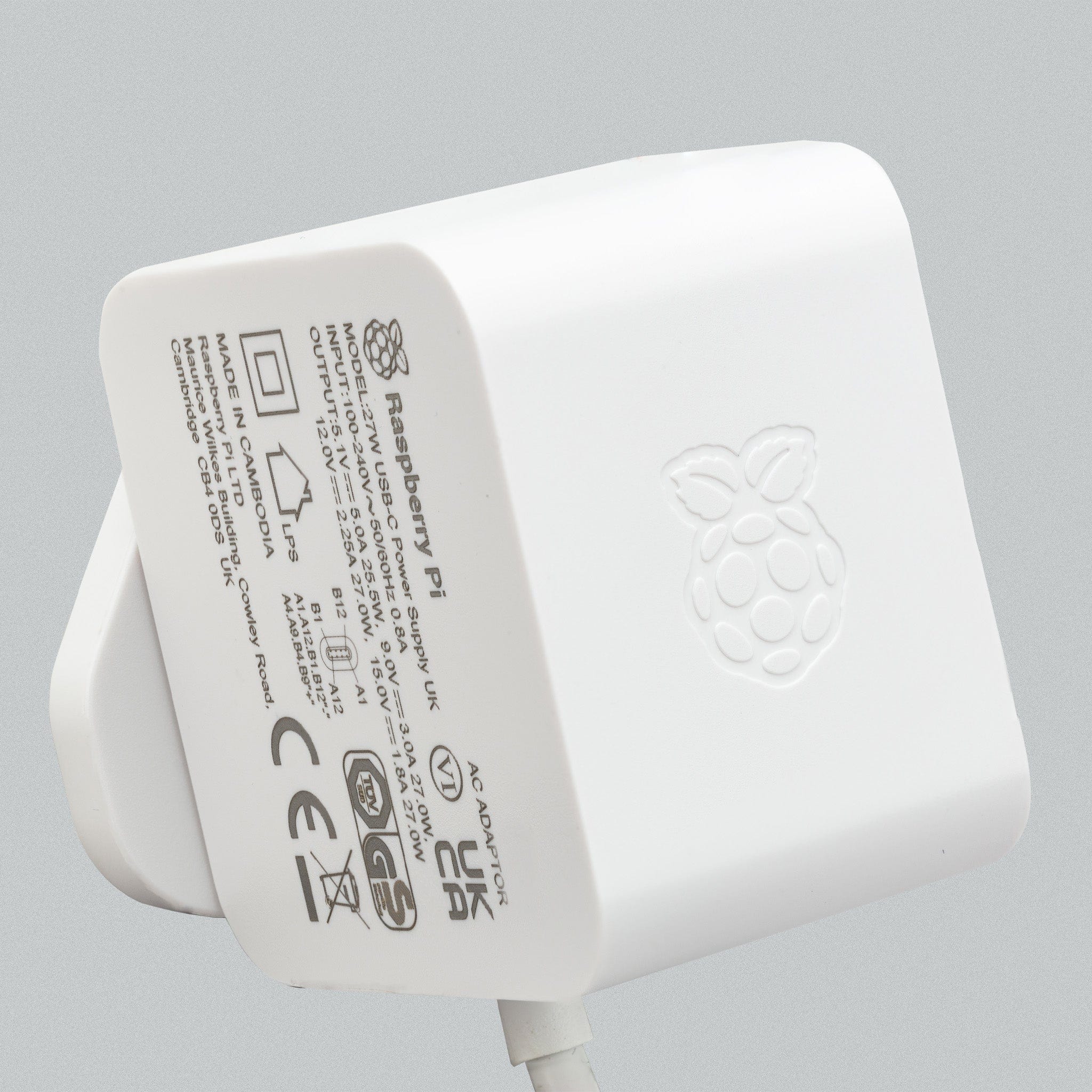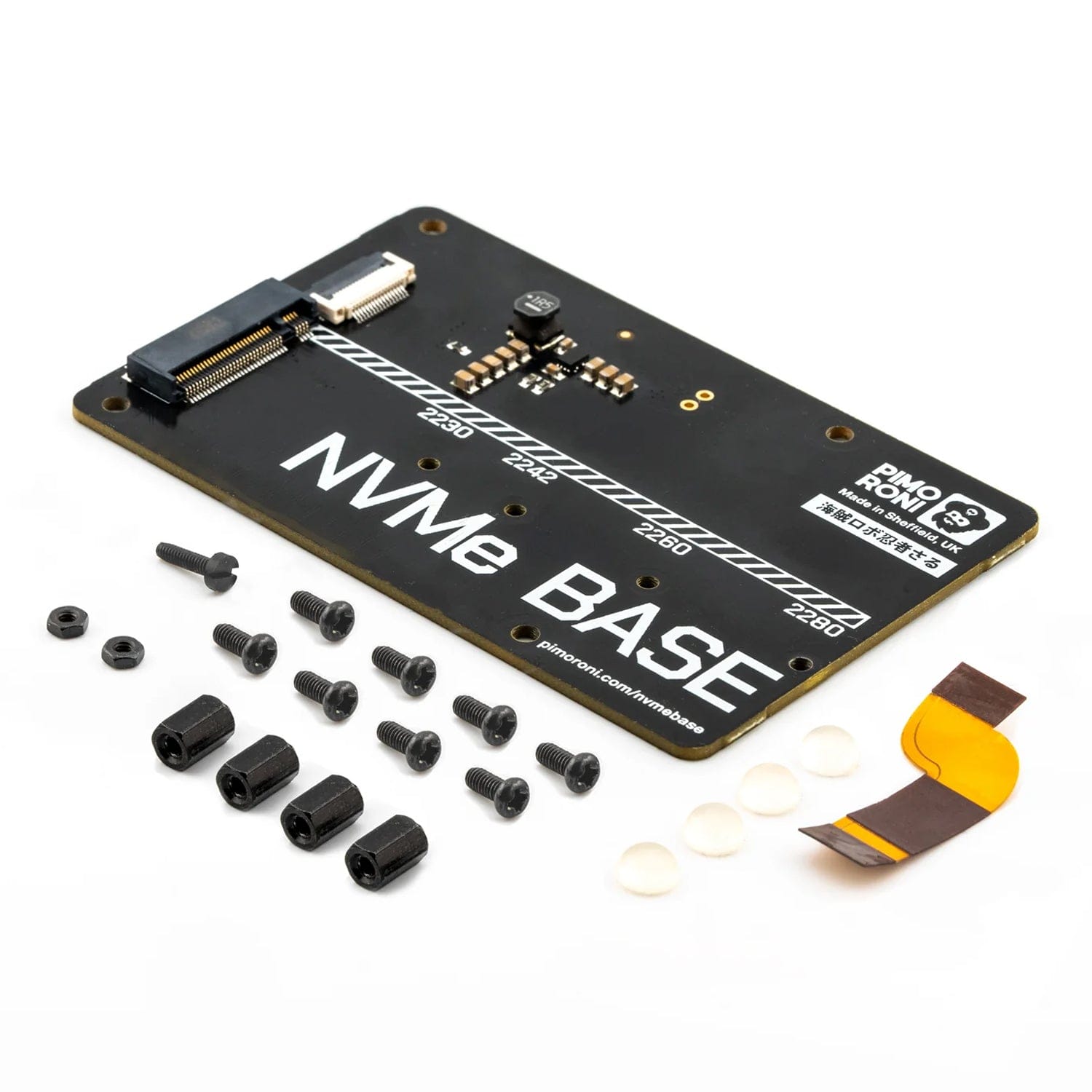
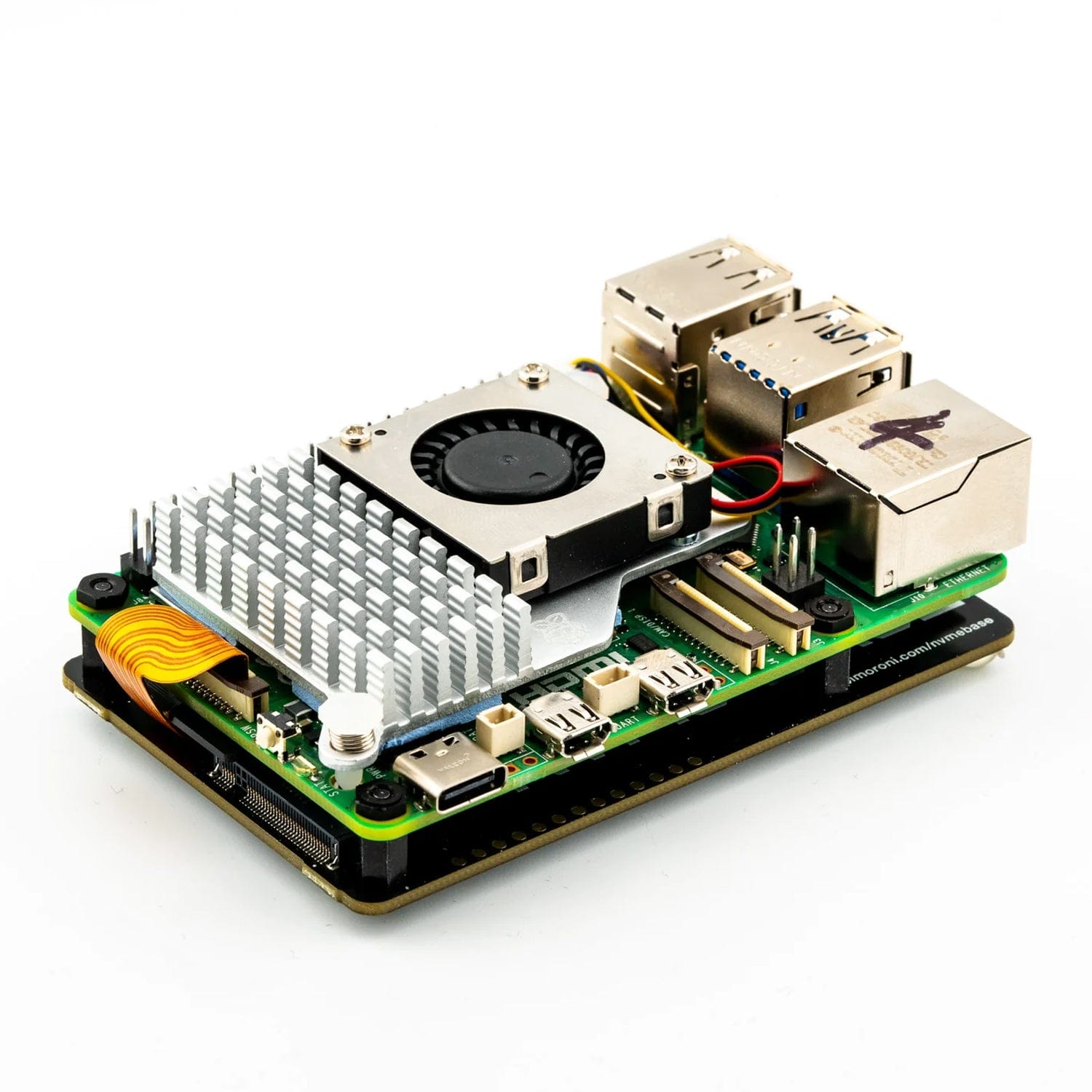
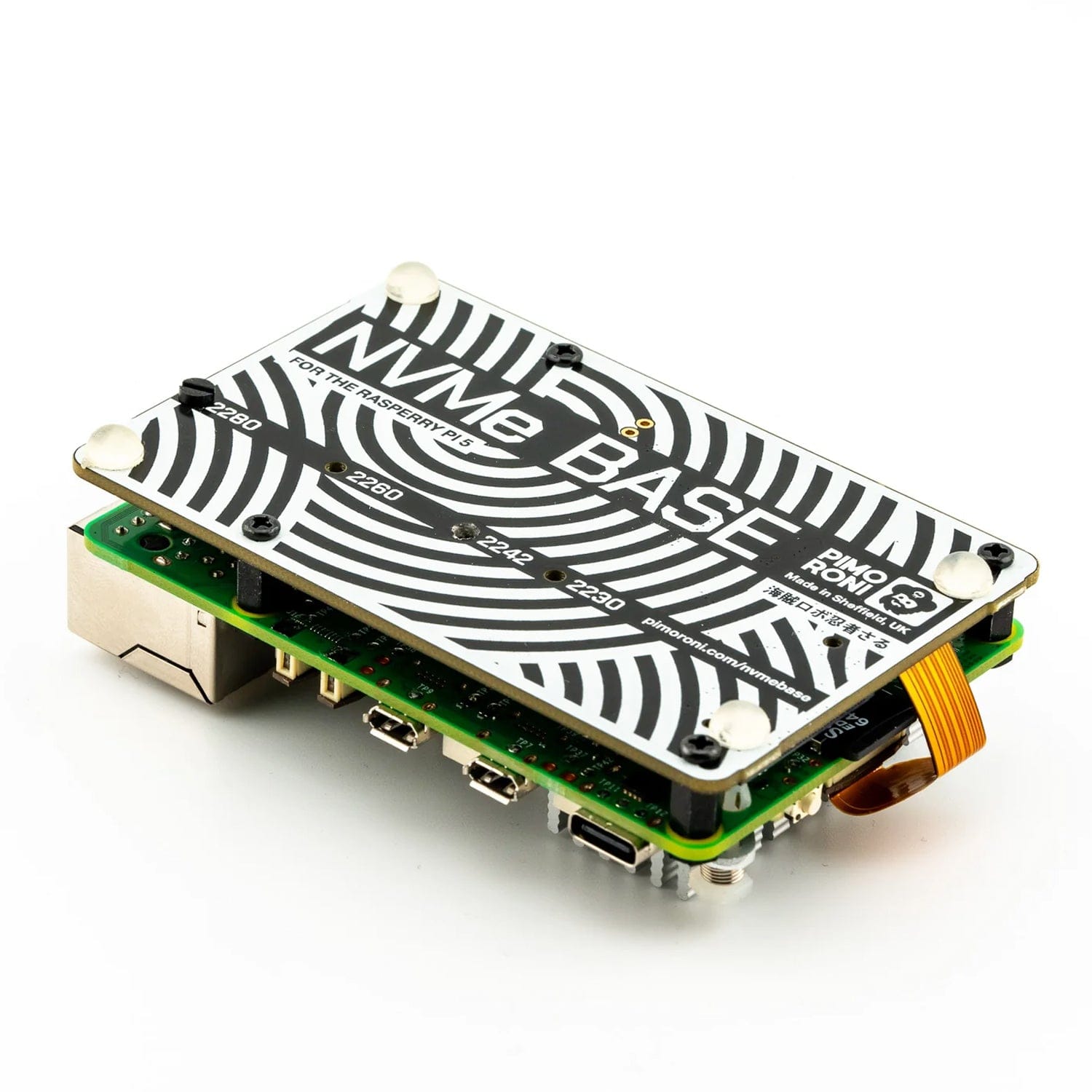
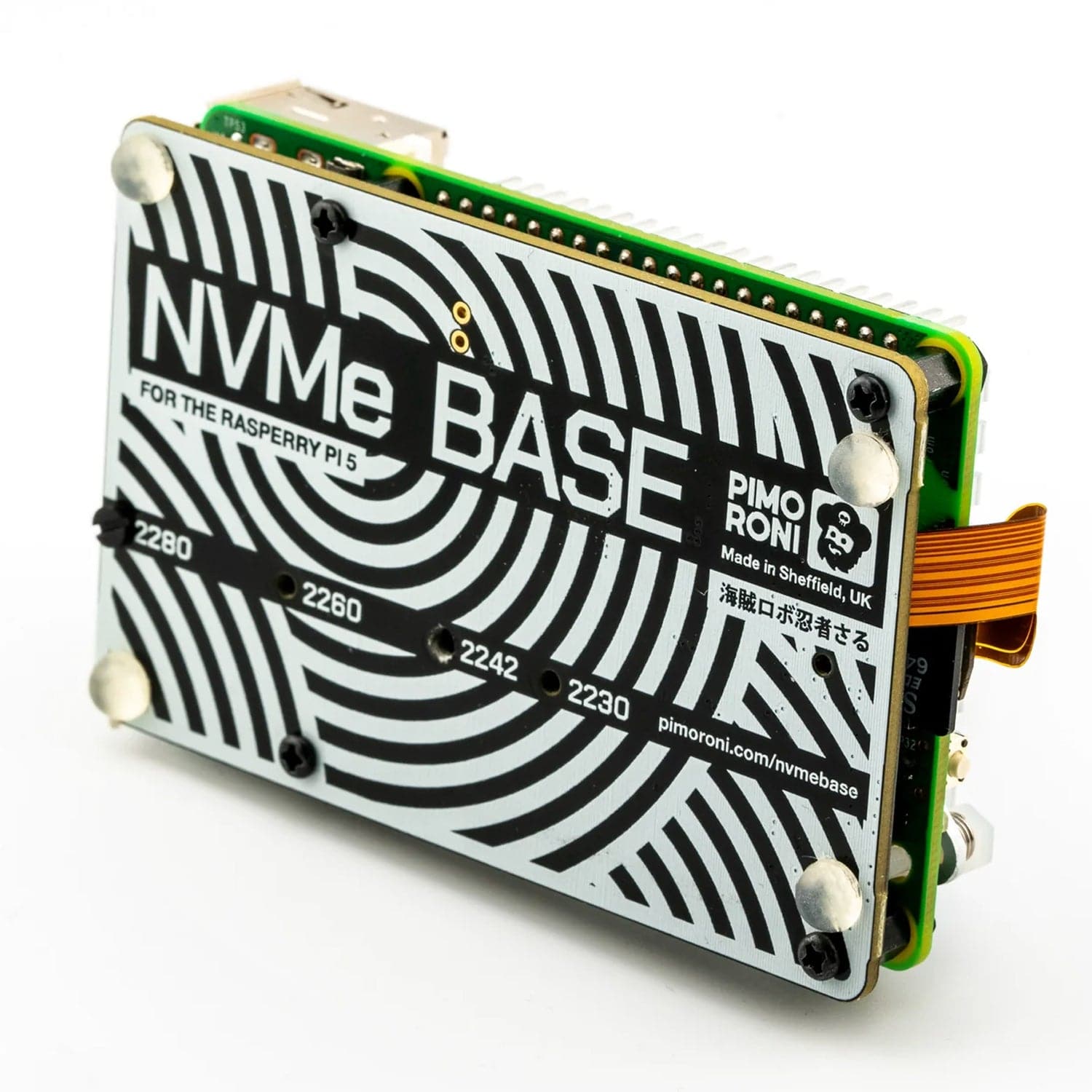
Login / Signup
Cart
Your cart is empty
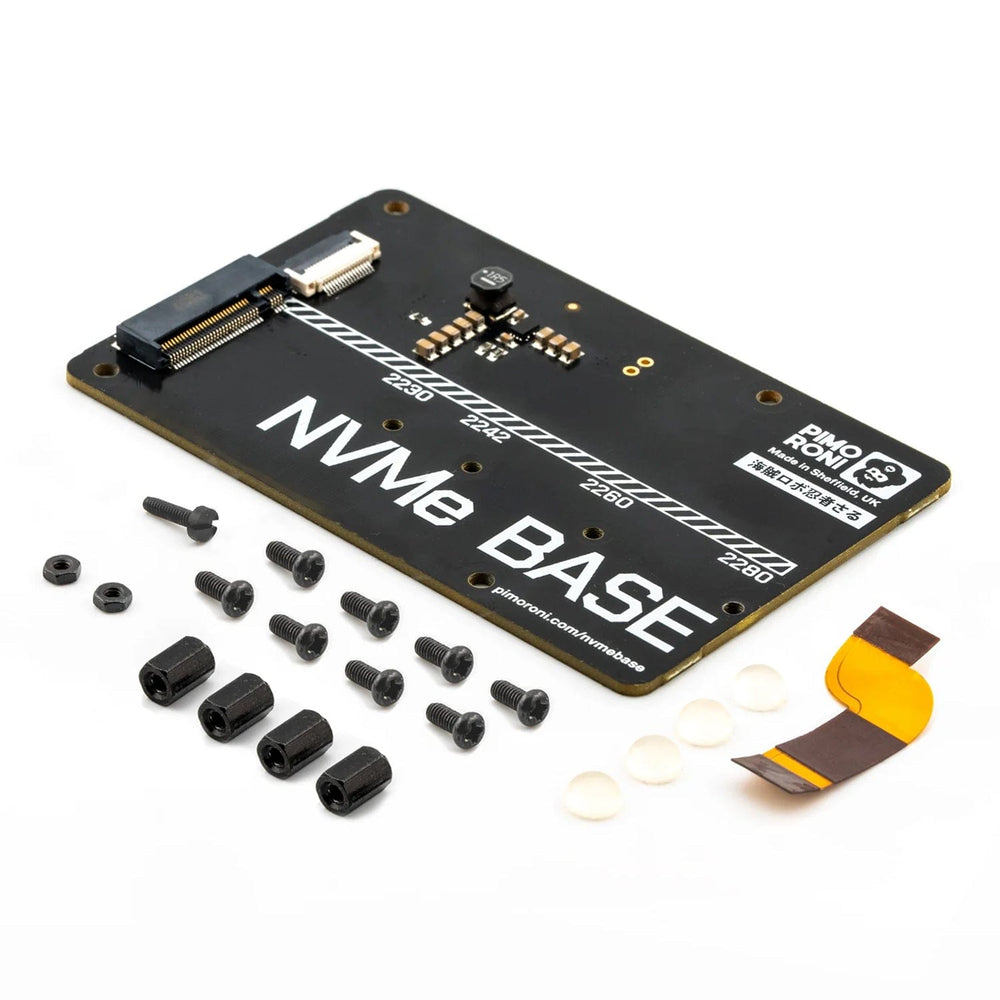

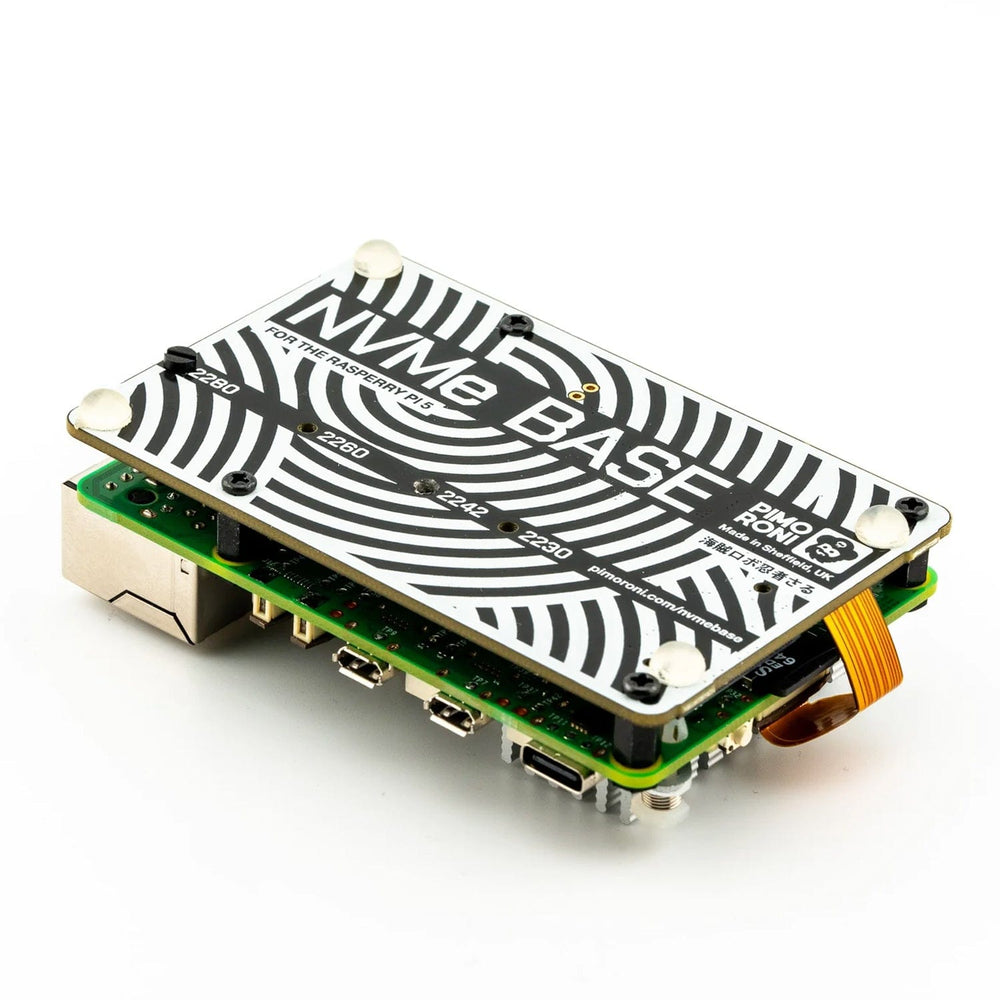
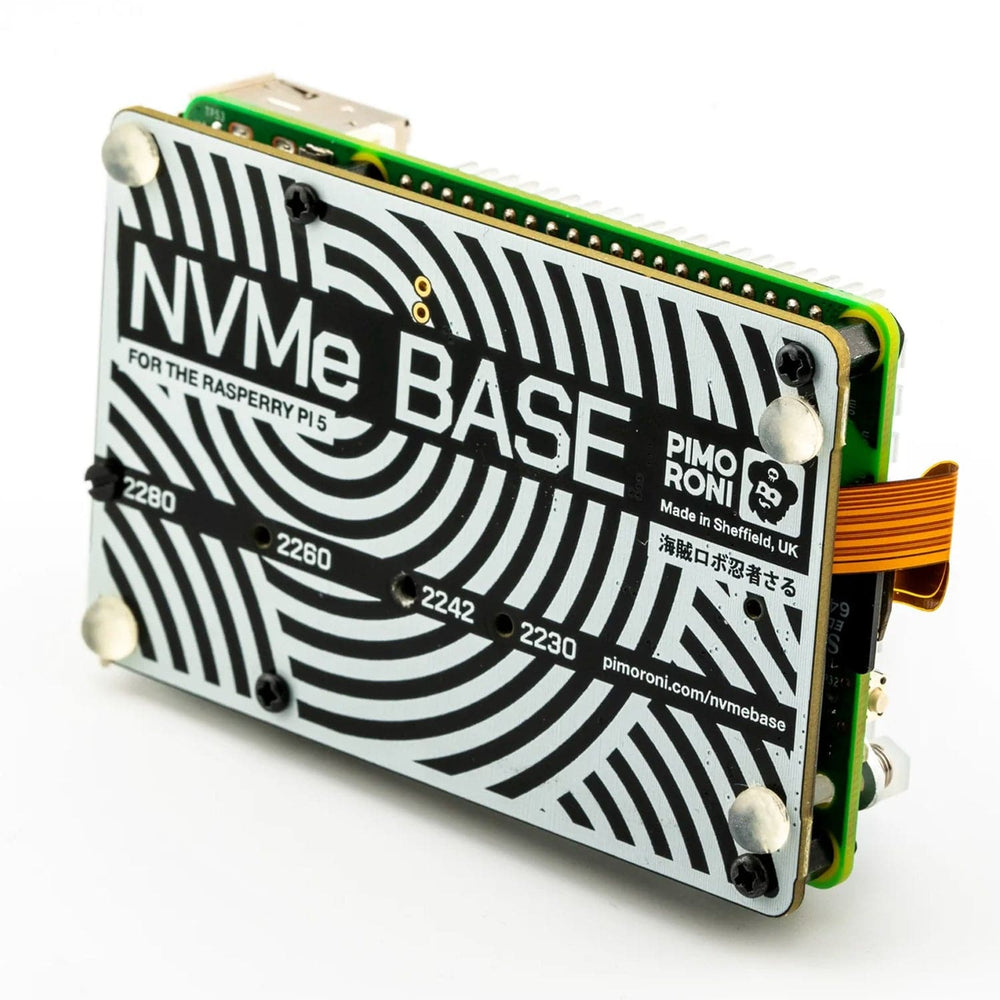
Add super-fast storage to your Raspberry Pi 5 allowing for lightning-fast boots, NAS use, and snappy applications!
NVMe Base is a PCIe extension board for Raspberry Pi 5. Simply populate it with an M-key NVMe SSD (2230 to 2280 sizes supported) and mount it under your Pi for a compact and fast storage solution - It even comes with rubber feet!
It's the perfect solution for turning your Raspberry Pi 5 into a file server, media centre, reverse proxy, etc. - any task that benefits from large amounts of fast storage, especially with random high operations per second (IOPS) workloads. In short, it's a game-changer!
NVMe base follows the new "PIP" design guidelines provided by Raspberry Pi ensuring that it will be easy to use and be supported long term by updates to Raspberry Pi OS - though it is very early days and things are improving rapidly there!
We also stock the NVMe Base Duo from Pimoroni! Plus we stock replacement 35mm and alternative 50mm PCIe cables to give you a variety of options for connecting and placing your NVMe Base.
For the most hassle-free experience, make sure your Raspberry Pi OS is up to date, and your RPi 5 firmware is updated to 2023-12-06 (Dec 6th) or newer. This supports all the features of the RPi PCIe spec and means you don't have to mess with config files to get started.
Active Cooler, Raspberry Pi and NVME SSD not included
Pimoroni have tested NVMe Base with the following M.2 NVMe drives successfully. They have usually tested one drive from one batch, so this is not comprehensive, or an 'Approved' list, but it's a good guide for drives to seek out:
'Maybe' List. Works with quirks/not ideal.
These drives either needed extra power, were a bit quirky when Pimoroni tested them or they've had reports of them being problematic. It may just be the drive they had, but they're probably best avoided.
'Avoid' List. Pimoroni had problems or reports of problems.
Otherwise most M.2 NVMe drive (Not SATA!) you have lying around should work fine. Check out their benchmark results over at pibenchmarks.net!
For the most hassle-free experience, make sure your Raspberry Pi OS is up to date, and your RPi 5 firmware is updated to 2023-12-06 (Dec 6th) or newer. This supports all the features of the RPi PCIe spec and means you don't have to mess with config files to get started.
Software update on the RPi OS should do this for you, but to force it you can:
sudo raspi-config and choose 'Latest' under Advanced Options > Bootloader Version.Running sudo rpi-eeprom-update in the Terminal will tell you which version of firmware is running.
To enable experimental and not-officially-supported PCIe 3 mode, add the follow line to the [all] section at the end of your Raspberry Pi /boot/config.txt file like this:
[all]
dtparam=pciex1_gen=3Save and reboot - your drive is ready to use!
If you want to boot from the NVMe drive, follow these extra steps:
sudo raspi-config 




